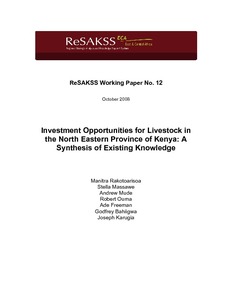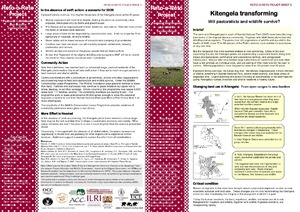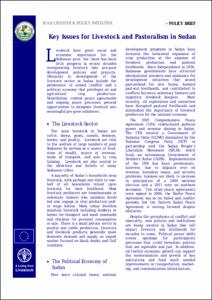Is it worth to recuperate degraded pasturelands? An evaluation of profits and costs from the perspective of livestock producers and extension agents in Honduras
The objectives of this study were to: (a) estimate milk and beef yields obtained from cows grazing pastures in different stages of degradation; (b) estimate income losses as a result of the degradation process; (c) estimate the proportion of pasture areas found in each stage of degradation within the six administrative regions of Honduras; and (d) identify different strategies and costs to recuperate degraded pastures. Data came from two surveys executed during a workshop carried out in March 2004.







